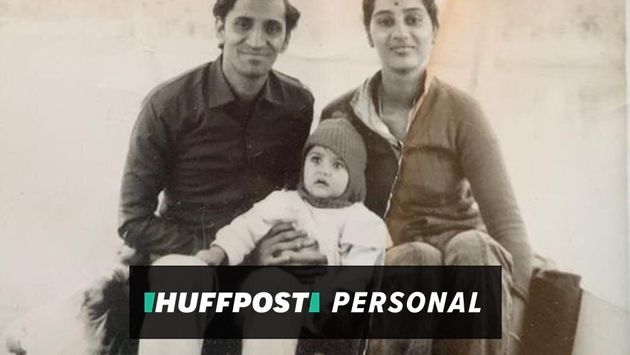
In the beginning, there was lamentation.
Like any New Yorker in lockdown who isn’t risking his/her life on the frontline, I mourned the cancellation of my low-stakes IRL life ― screenings and networking events, happy hours and fusion food courts. And like so many New Yorkers, I have come to rely on gathering places as annexes to my small apartment. Whether it’s at the neighbourhood dive or the dog park, ‘outside life’ in New York is life itself. Nothing could have prepared me for the mental ticker tape of my generation’s second great recession, my city under siege or a mounting death toll. Nothing could make me want to go out and commiserate with friends even more.
But as the Covid-19 lockdown crawls into its eighth week, I can’t help but be startled at how easy it is for someone like me – a first-generation Indian-American woman – to spend significant stretches of time removed from the public sphere. And now, for better or worse, I feel oddly equipped to handle three to five months of exclusively virtual interactions, six feet of separation in public and a programmatically monastic bearing in the world. There is something uniquely quarantine-ready about my upbringing that I finally have the chance to reckon with.
My parents immigrated to North America when I was a baby, first to Canada and then to the New York tri-state area. Like many Indian immigrants of their generation, they’d had an arranged marriage, and after my father was able to secure a postdoc in Montreal, they traded their balmy verandahs for months-long snow cover. But they also came from observant, 100% vegetarian Tamil Brahmin communities, entirely endogamous micro-worlds tent-poled by the practices of extreme purity. Some people might recognise that Brahmins comprise a relatively comfortable position at the top of a ruthless and still pervasive caste system in India. While this is true, my childhood household in America was not positioned as a superior space contra other castes, but as a fortress against ourselves.
There is something uniquely quarantine-ready about my upbringing that I finally have the chance to reckon with.
In turn, I was raised in a home with a very specific set of rules that viewed cleanliness as ritual and our bodies as walking pathogen, potentially discharging infected droplets with every accidental salivation. Saliva is a sticky substance in Hinduism. It represents impurity because it’s both a bodily and dietary residue: a rotten cocktail of food particles, acids and mucuses. In a religion that hinges on pollution (of the body, the mind or the spirit), saliva is kryptonite. And like any religious practice that’s influenced by IRL logistics, one can imagine the rudimentary homes of ancient and medieval Hindus, teeming with extended family, where errant saliva could be the difference between life and death.
For this reason, orthodox Brahmins, like my mother, keep separate cooking utensils to demarcate those vessels the group will be served out of (such as pots, pans and skillets) from those that will be directly eaten off of or drunk out of (like plates, forks and tumblers). In many homes in India, a second sink is built on the first floor to wash plates, eating utensils, cups and anything one’s saliva has had contact with, even indirectly. In Sanskrit, this material is called uchchhishta with various terms in regional languages, meaning “contamination by food or hand that has come in contact with the inside of someone’s mouth.” Think: backwash. To this day my mother washes cooking vessels in the kitchen sink and eating vessels in the first floor half-bath. We don’t share sips out of the same glass or bites out of the same sandwich.
Beyond cookware, my mother also upheld embarrassingly antiquated rules around menstruation. When I got my first period, I had to maintain a buffer zone around my mother, father, and brother – a mixed bag for an angsty pre-teen who relished the personal space and absolution from chores, but at the cost of everyone knowing you were on your period. In a traditional Tamil Brahmin household, menstruating women are supposed to avoid religious objects and spaces, the kitchen (which, because of extreme purity and cleanliness is seen as a sanctified space) and family members. In other words, no touching, no hugging and a distance of several feet must be observed. Sound familiar?
When you’re trained to keep your distance within the same household, keeping six feet away from strangers is a piece of cake.
To be clear, these old-world taboos concerning cleanliness and contamination still exist in many parts of India and still perpetuate the oppressive hierarchies of caste and gender. They seem very removed fromthe steps we’re all taking to combat an actual virus that has killed more than 230,000 people around the globe. Even still, my family’s protocols around saliva, droplets and fluids equip me to be cautious about coming into close contact with others. When you’re trained to keep your distance within the same household, keeping six feet away from strangers is a piece of cake.
As I reflect on the outmoded practices of the community I was raised in, normal aspects of my upbringing that I do not observe as an adult, I am led back to the other confines of my youth – walls built on nostalgia, loss and fear that kept out reckless assimilation, walls within which the real pathogen was total and unfettered Americanness.
For many South Asian late-millennials, or those of us who grew up in the 1990s, the constraints of living under pandemic eerily recall our strict upbringings. We instinctively recognise the pangs of FOMO, as we would watch our more American friends casually go to the mall or the movies, parties and dances, while any of those excursions for me would involve stages of begging, pleading and case-making.
For children of immigrants, the lives we led at home were the lives we led with necessary cunning and resourcefulness, elaborate systems to let the outside world in, without breaking any walls.
The truth is, in an extremely diverse but also xenophobic middle-class town in New Jersey, “going out” wasn’t always fun, easy or safe. In middle school, my whip-smart best friend – who wore a hijab – and I would avoid walking past the bus line, ever vigilant to the many taunts and threats hurled at us. And this was before 9/11. After that day, it became difficult to go outside in my town. I made my parents affix American flags to their car. I hated when my mom wore a salwar kameez or a sari, even to the front porch. And so, sometimes, it was easier to just stay home.
For us children of immigrants, first-generation Americans from traditional families, the lives we led at home were the lives we led with necessary cunning and resourcefulness, elaborate systems to let the outside world in, without breaking any walls – without going out. The internet was expanding rapidly, and though there was no social media, there was the distinct titillation of a mysterious chat room, likely filled with men of all shapes and sizes, an activity that felt more dangerous and exciting than a shopping trip to Claire’s. There was soft, well-intentioned catfishing on my parents’ desktop through AIM; there were code words and landline ring patterns (two rings followed by a hangup means call him back); there was crush-related whoopee over the phone with my best friend (from the safety of my parents’ car in the garage).
As a teenager, my family’s rituals and cultural expectations felt repressive and unfair. So it is all the more surprising that they could instead be a twisted blessing — a rehearsal for staying sane, functional, even intermittently productive in these unsettling times.
I can draw a straight line from the “remote” adolescence I spent online to my remote life now under lockdown. I didn’t have to worry about how I looked, how “weird,” “ethnic” or unconventional I appeared to other people. Online, I sparkled with wit and charisma. I lived freely and wildly at a distance, reinventing myself in Comic Sans. And so Gmail, iMessage, Zoom chat windows: these are my uninhibited safe spaces, dance halls of drollery and wordplay, formats I’d like to think I am – to this day – simply awesome at.
Of course, a lot has changed since then: The way technology allows us to virtually be in the same room, the growing embrace of diversity and multiculturalism in the media, the beautiful cross-contamination between my two worlds. What’s more, there is no comparison between my quasi-quarantined adolescence and self-isolation now, as millions of financially and food-insecure Americans struggle, while others watch the vulnerable become extremely ill, and sometimes die – all from a painful distance. After all, I was still able to go to school, learn and socialise in person, ride my bike to and from my summer job at the dry cleaners, rely on my parents for food and shelter, flourish in middle-class safety. For many in the last two months, these options are simply, and unjustly, unavailable.
As a teenager, my family’s rituals and cultural expectations felt repressive and unfair. And so it is all the more surprising that they could instead be a twisted blessing – a rehearsal for staying sane, functional, even intermittently productive in these unsettling times. Here in the spring of 2020, with my partner and our dog, I think of how tickled teenage-me would be to see the tables turned for those Americans who are financially and food-secure, healthy and safe, trying to find everyday comfort and joy from within their homes, and just trying to ride this out, like a lanky, frizzy-haired brown girl once did.
This article first appeared on HuffPost Personal
Have a compelling personal story you want to tell? Find out what we’re looking for here, and pitch us on ukpersonal@huffpost.com


